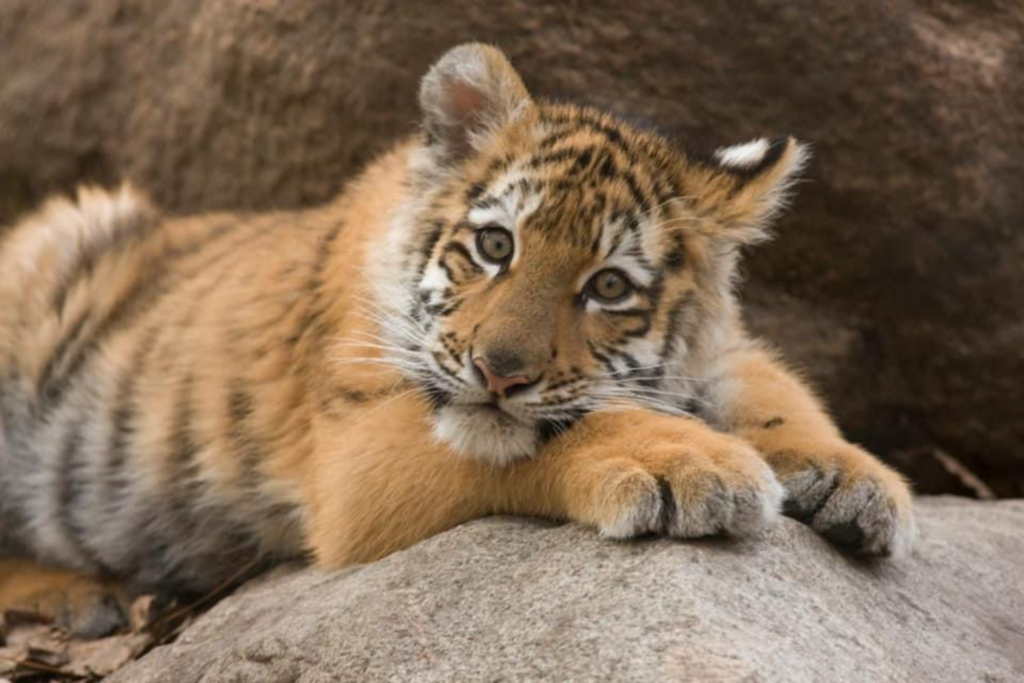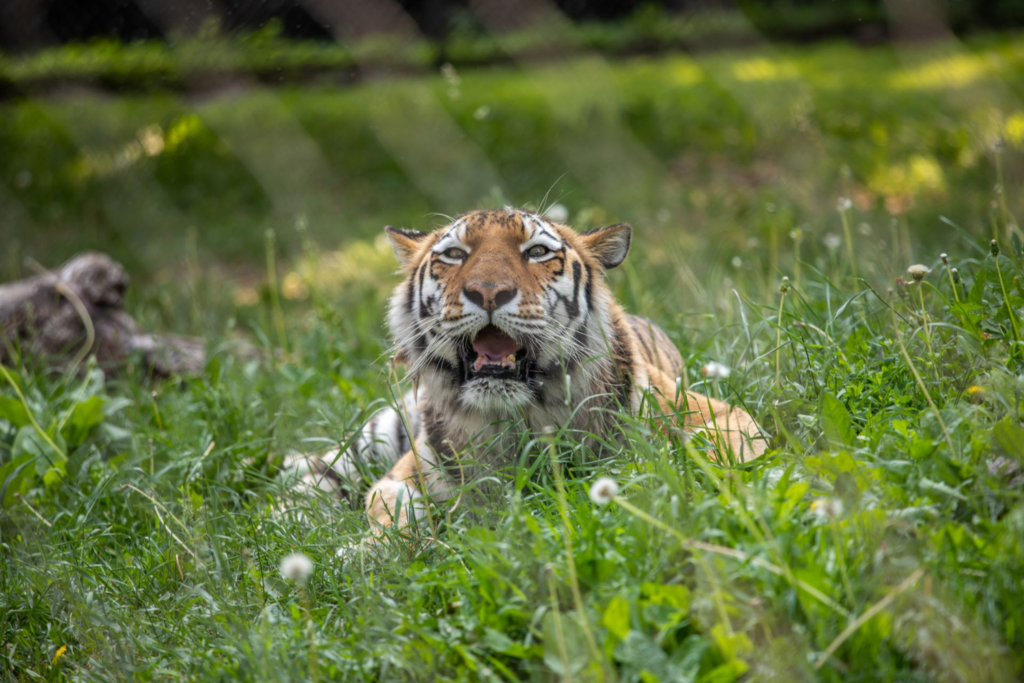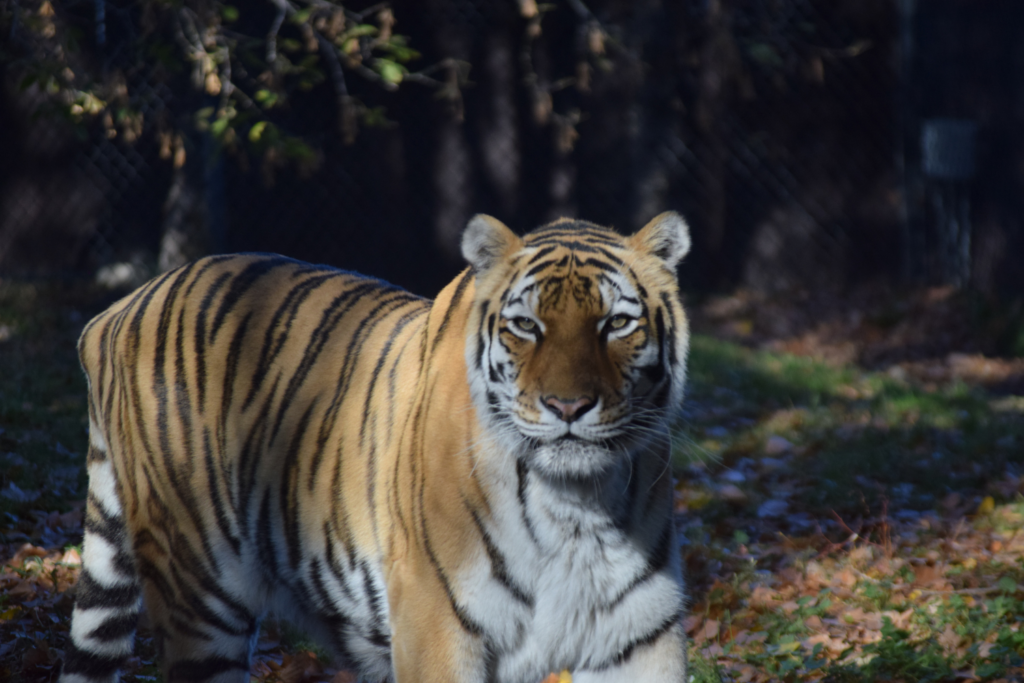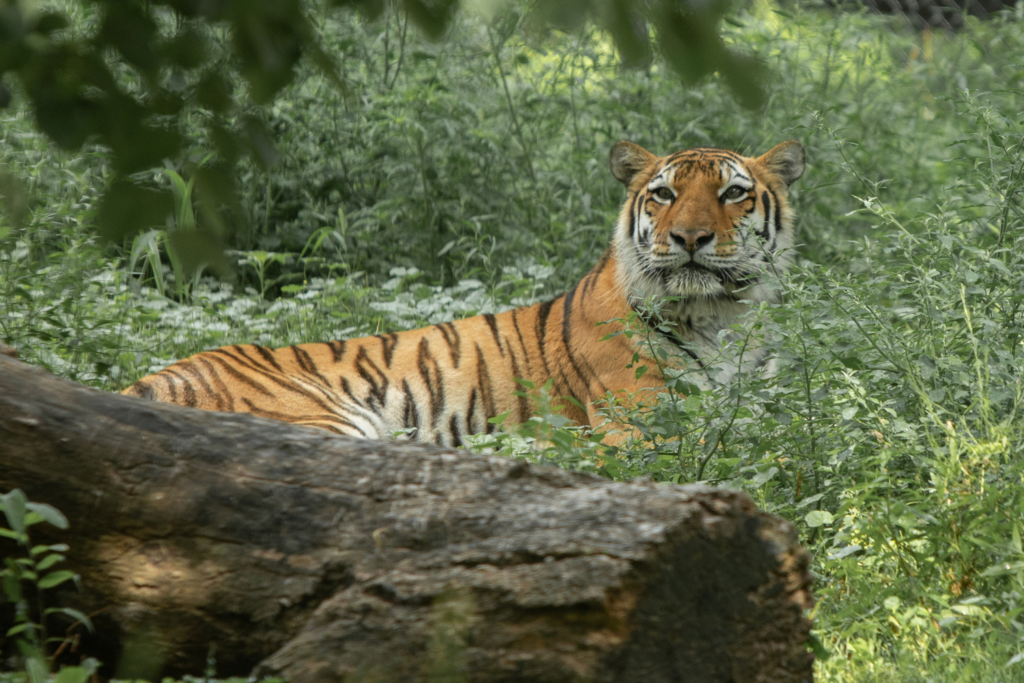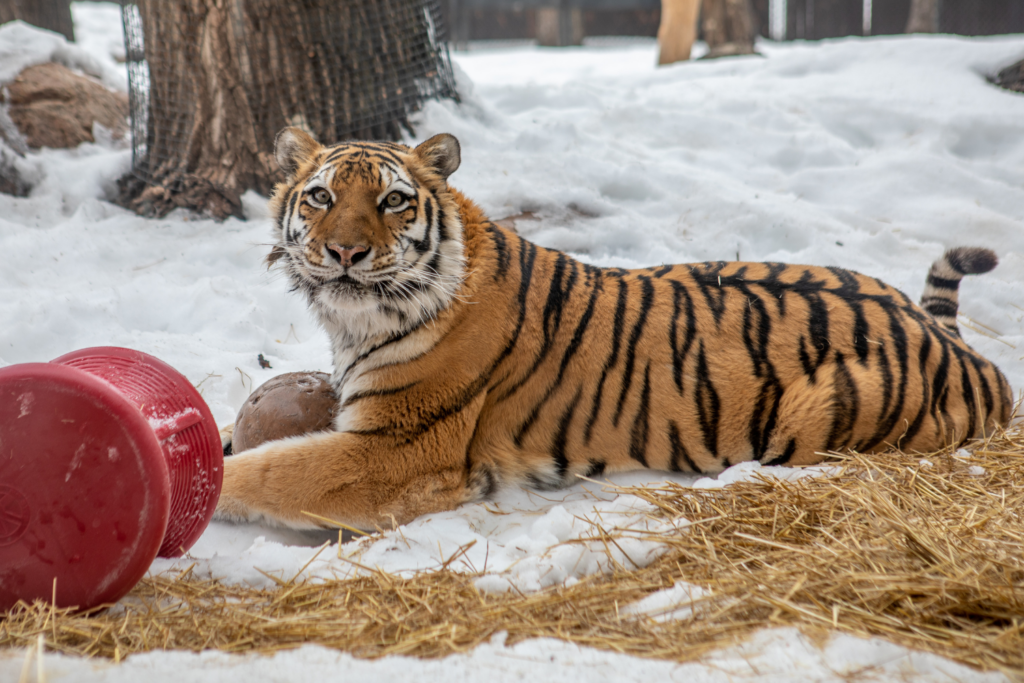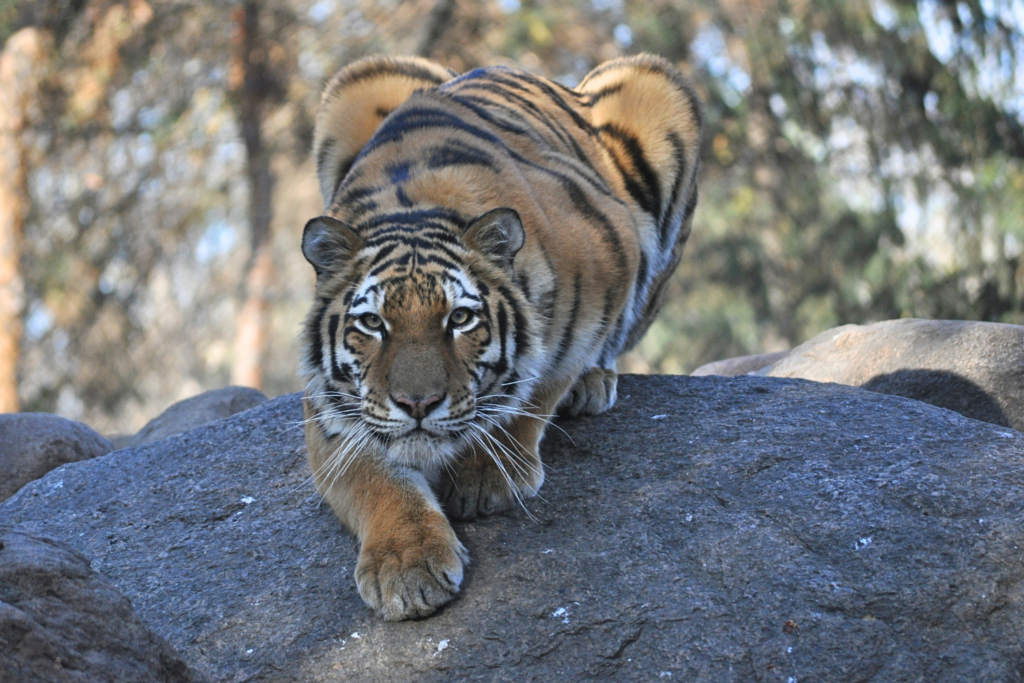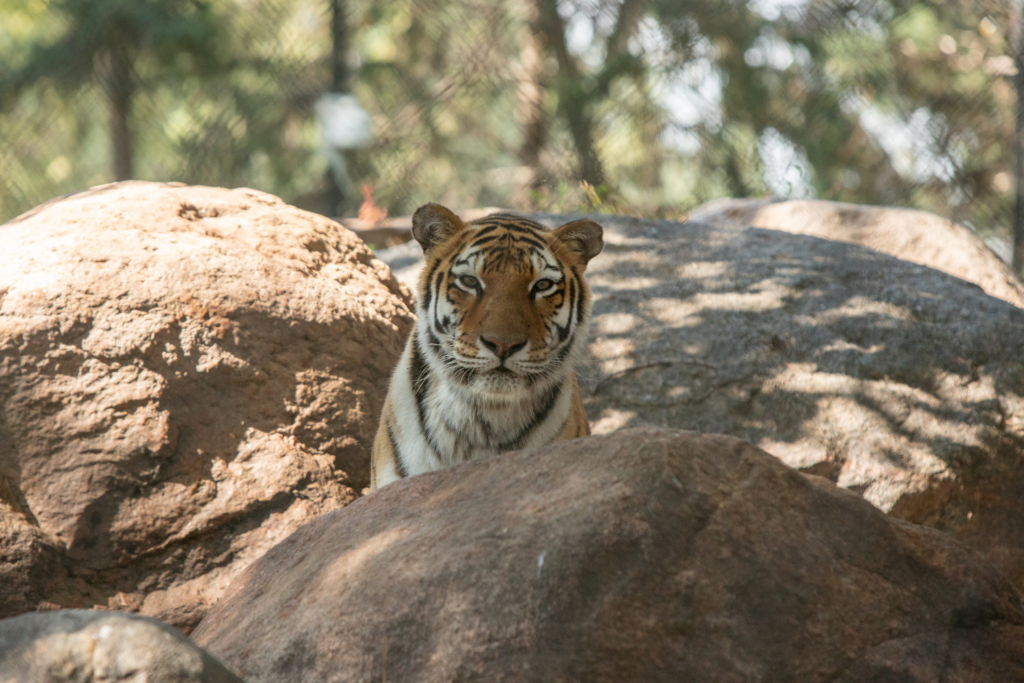September 23, 2025
The Sioux Falls Zoo & Aquarium (SFZA) family is mourning the loss – and celebrating the extraordinary life – of Callie, the 16-year-old Amur tiger. Callie was humanely euthanized last week due to progressive age-related health issues.
Callie was a miracle. She was born at SFZA’s Great Plains Zoo (GPZ) campus in 2009, as one of a litter of six cubs. Rejected by their first-time mother, she was the lone survivor, bottle-fed and hand-raised by her dedicated care team. Callie left Sioux Falls briefly to live at Wisconsin’s Henry Vilas Zoo, but returned after a few years to the team and community that rallied around her in her infancy.
Carnivore Area Supervisor Angie Blommer was part of the team that hand-raised Callie.
“Callie was a fantastic ambassador for her wild counterparts,” said Blommer. “She knew how to capture everybody’s heart and have them love her. Spunky from the day she was born, her favorite activity was to hide, stalk, and surprise her keepers. Callie loved to train and made sure to talk to us the entire time. She also loved to show her affection for her keepers by chuffing at them anytime they were near. The entire team is going to miss her happy noises and cheery disposition each day.”
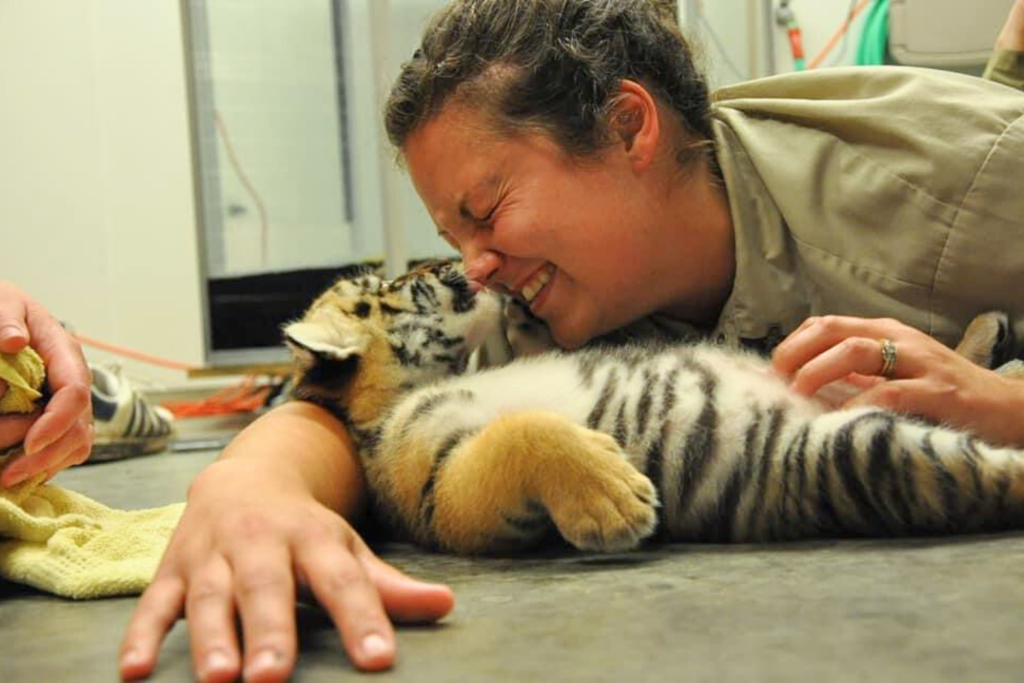
Callie has been a mainstay of the GPZ campus, highly engaged with her care team and always interested in our guests – especially those using strollers and wheelchairs. Every day with Callie brought new opportunities to watch her joyfully exploring her habitat, reveling in her favorite scent enrichment, playfully stalking her keepers, and majestically surveying the zoo from atop her waterfall.
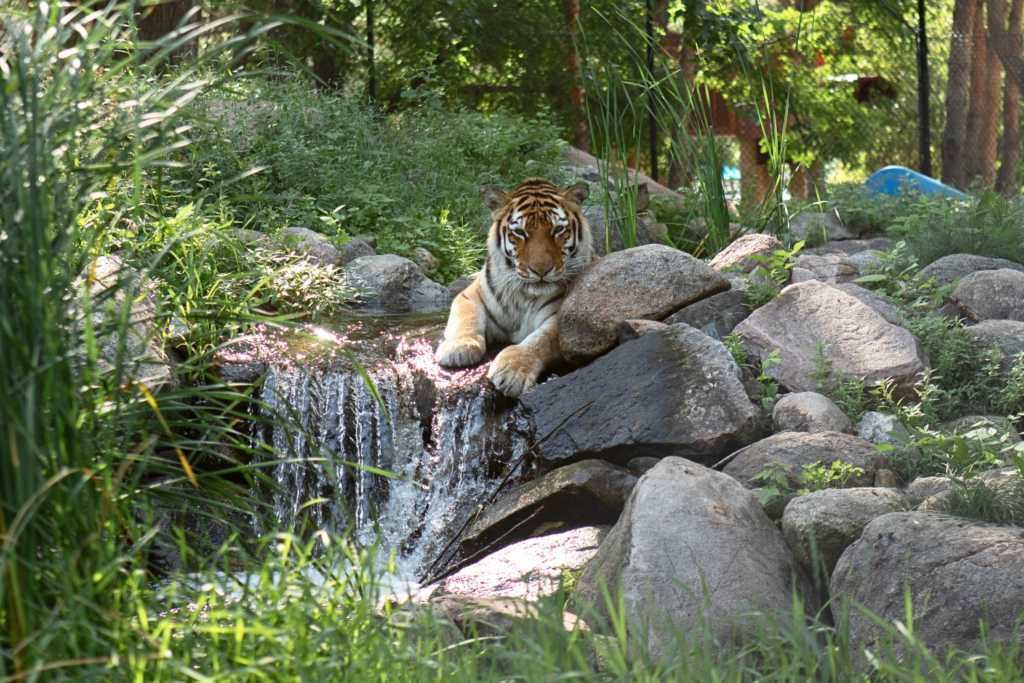
Fewer than 700 Amur tigers remain in the wild, with that number declining each year due to poaching, habitat loss, and diminished prey populations. Callie served as an important ambassador for her species, showing millions of people how extraordinary Amur tigers can be – and why they are worth saving.
GPZ has been home to Amur tigers since 1969, with the renovated Asian Cats exhibit opening in 2008. Stay tuned in the coming weeks for more news about our continuing work with this species.
